When I walk through the woods I catch myself greeting those I pass along the way in my mind, saying hi to the salal and giving a nod to the devils club. It’s a change of perspective that has happened since becoming a herbalist, but I realized that it hadn’t extended to those growing beneath the sea, that is until recently. Seaweed has been on my radar for years, and I have bags of various types in my cupboard dating back to 2013 to prove it (this is my sign to throw that out lol), but I never really got in to it, even though I knew that it was a nutritional goldmine. I’d brush it aside and tell myself that I’d get serious about it one day. Well, I feel like that time has finally come and I’m officially obsessed. It all started back in the spring, when we had a class on seaweed at my herbal internship in Oregon.
Our class was with James Jungworth of Naturespirit herbs, who was giving off cowboy Clint Eastwood vibes, except he wrangles seaweed, not cattle. He looked so vibrant and healthy, and I felt sure that the seaweed was to blame. I suppose his passion for the stuff was contagious, because by the end of our class we were all gushing about seaweed. I think that part of it was how badass he made being a seaweed harvester seem. Going out for the expedition and camping on the beach in cool DIY camper conversions, waking up at dawn to get out for low tide, getting in the water for your harvest, and then ripping home to hang everything up to dry. It sounded adventurous, potentially dangerous, and just really truly cool. I’ve always admired surfers for the pure and healthy lifestyle they seem to have and I feel that seaweed harvesting is like that, too. Somewhere out there in an alternate reality there’s a cooler Anika who surfs, but here on earth I’m not there (yet), and harvesting seaweed feels much more possible and less intimidating! I also love that there’s this requirement of being in tune with nature since you have to be intentional about when you go out and follow the moon cycle to align with the lowest tides. It’s a very holistic approach to gathering food.
I live on the west coast of Canada, so I was pretty in awe when it clicked for me that I could go out and collect some of the most nutrient dense foods just off the beach. I think I saw the seaweed on the shore as something different from the seaweed I was buying in the store, but now that the connection has been made I’m having a total awakening. Earlier this summer I started looking into harvesters around where I live, and found one woman who holds workshops. That was my queue to sign up. I got up early one Wednesday morning and drove myself to the western side of the island, grey and misty even in mid July, where I met a surprisingly large group for the day long workshop. We talked seaweeds at the beach, collected some, and then spent the rest of the day chatting and doing a hand soak (more on this below), all while the seaweeds dried by hanging on the branches of a tree.
My new obsession has opened up the doors to a whole other new obsession: Thalassotherapy - aka using seawater and seaweed therapeutically. This led me down a long rabbit hole to the traditional Irish seaweed baths (like this one). Bathing in seaweed is an ancestral healing modality in numerous cultures, but I’ve become pretty enamoured with the Irish seaweed spas and now I have a whole new life plan where I move to Ireland and work at a historic spa. It doesn’t take much to derail my life train! But seriously, this traditional therapy is incredible. First off, your skin is your largest organ and takes in whatever you apply to it, so soaking in the mineral rich seaweed is providing those crucial minerals to your body. Think about epsom salt baths, or magnesium lotion. A seaweed soak is like the godfather to those. Sore muscles, joint stiffness (rheumatism and arthritis!), trigger fingers (mom, I’m looking at you!), eczema and psoriasis, these are all conditions that could greatly benefit from a seaweed bathing ritual.
Seaweed is designed to be constantly dehydrated and rehydrated again, as it washes up on the shore and then gets taken back out with the tide. Think about how rare that is! This means that you can dry it and reconstitute it back to its wet form, and not lose any of its nutrients in the process. I like to keep that in mind when I think about its effects on the skin. Plumping and hydrating. Seaweed is full of antioxidants which promote collagen production, in turn smoothing and firming the skin. During the seaweed workshop I did, we put a variety of types in a bowl of hot water and did a hand soak which was so soothing. The water quickly became nutrient rich and almost gelatinous. My skin was baby soft afterwards, so I decided to bring more of the seaweed home and try out a full sized bath. I even wrapped the seaweed on my face like a face mask, just to be a little extra. Two stand out favourites were the Turkish towel and Turkish washcloth varieties (yes, those are their legit names), which, as the names indicate, gave an exfoliating scrub experience. While in the bath I thought, damn, if I did this every day I would either never age or turn into a mermaid, both of which I would be satisfied with. I felt so pampered but also so wild, a combo I’m not used to but one I seek.
While on the beach, we collected a number of different seaweeds. Winged kelp (alaria), feather boa kelp (egregia menziesii) and good old sea lettuce (ulva), just to name a few. Seaweeds are broken down into three groups: red, green, and brown (which contains all types of kelp). Speaking of which, have you heard of kelp forests? They are essentially under water forests but the trees are replaced with giant kelp (some of the fastest growing organisms fyi!), which house whole cities of sea creatures. They are incredibly important for the health of the ocean and not only that, but algae provides more than half of our global oxygen.
Ok, if you’re not in love with seaweed yet then wyd?? We haven’t even gotten into the juicy details about how freaking good it is for us to consume (and how tasty it is). Seaweeds are the most concentrated natural food source of essential minerals, electrolytes and trace elements. They contains essential fatty acids, prebiotics and fibre. Basically the ultimate super food. It’s especially worth noting the iodine content, which is key for thyroid health. Kelp contains a compound called algin, which binds to heavy metals in the body to detox them. I’ve always had a product idea in the back of my mind to make a seaweed and herb salt shaker blend, because they’re great for seasoning and that makes for such an easy way to get a slew of nutrients in. They say that the optimal amount of seaweed to consume is somewhere between 3-6 grams (dried) per day, which is definitely doable! Keep in mind that if you’re bathing in it that counts as consuming, too.
Here are some of my favourite types I’ve experimented with so far.
Rockweed (aka bladderwrack) - great as a tea. Go for the bright green bladders when harvesting. Awesome in a bath or for a fun facial when you pop the “bladders” and squeeze out the gel.
Bull kelp - harder to harvest as this kelp is subtidal, but easy to find in stores. The fronds are what’s harvested but the bulb can be pickled or thrown on the BBQ. I love this one for snacking.
Kombu - mucilaginous and great when cooked with beans (helps with gas!). Has the highest iodine content of all seaweed.
Nori - A classic seaweed. Tried and true. Used in sushi and Welsh laverbread. This one is all over the beach, covering rocks and creating a total slipping hazard. High in protein!
Harvesting tips: do your research! Know what you are harvesting. No seaweeds are poisonous, but not all are really “edible”, so know what you’re looking for. Bring a guide book or go with someone who knows the ropes. Check out some of Ryan Drum’s articles, he’s like the seaweed whisperer. Go to a clean beach. Don’t take more than you need- seriously, start small! Use scissors or a knife to cut the piece of seaweed with at least a few inches left (leave the hold-fast intact) to allow it to regrow.
Learning about seaweed has made me feel like I’ve cracked the code to pure, genuine health. It’s kinda making me fall in love with living on the coast in a way I haven’t felt in a long time. I’m getting more excited for the grey, cold days of fall and winter so I can start making soups again with seaweed being thrown into the pot. I’d love to get inspired by your favourite ways to consume seaweed, so drop them in the comments below!





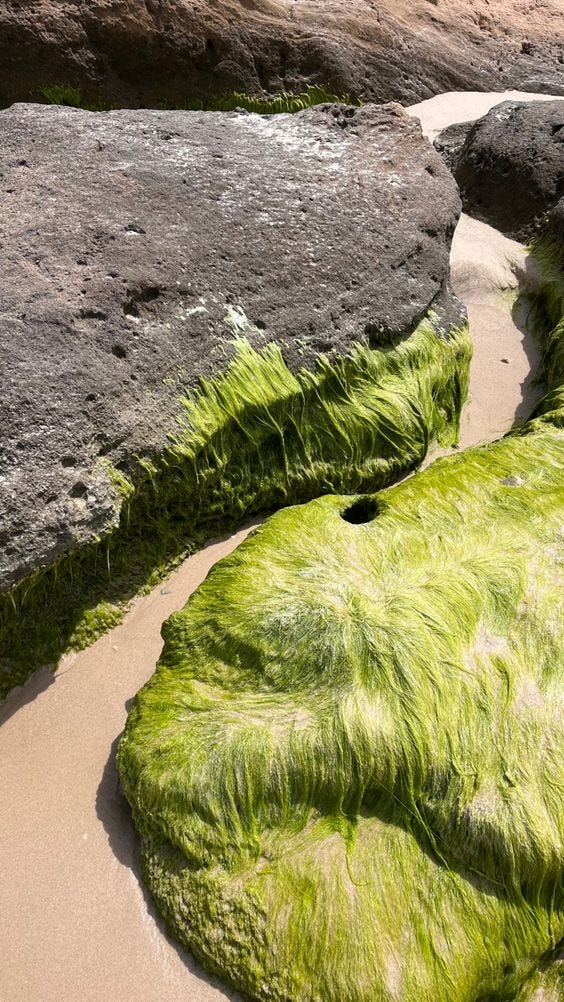
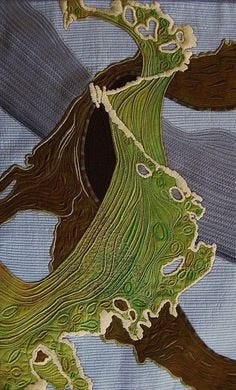

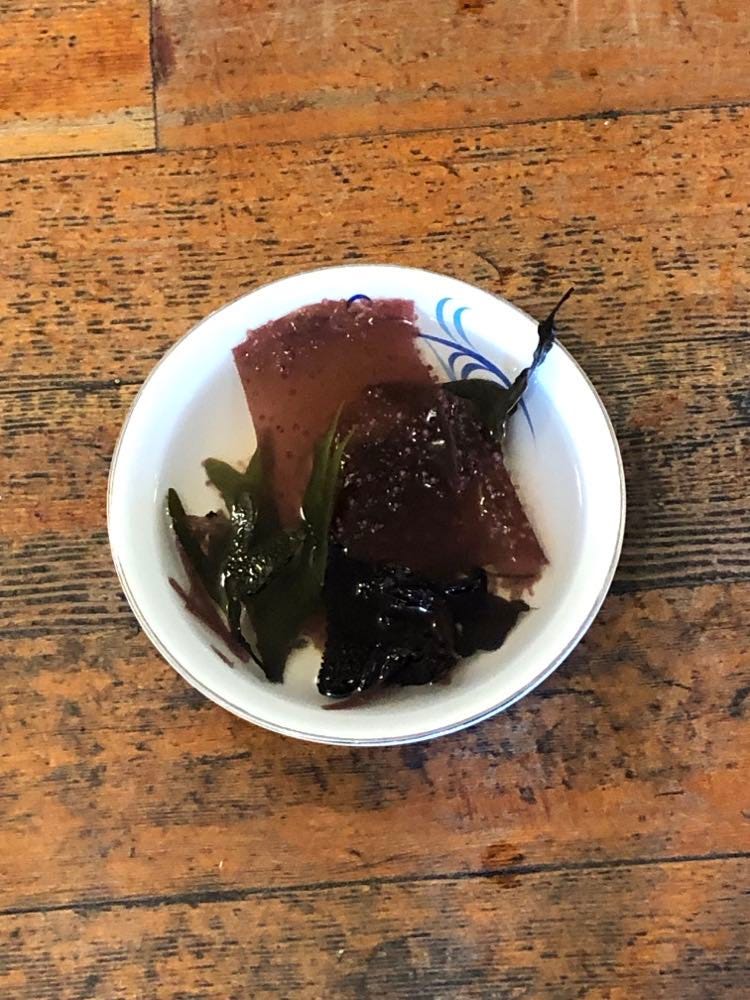
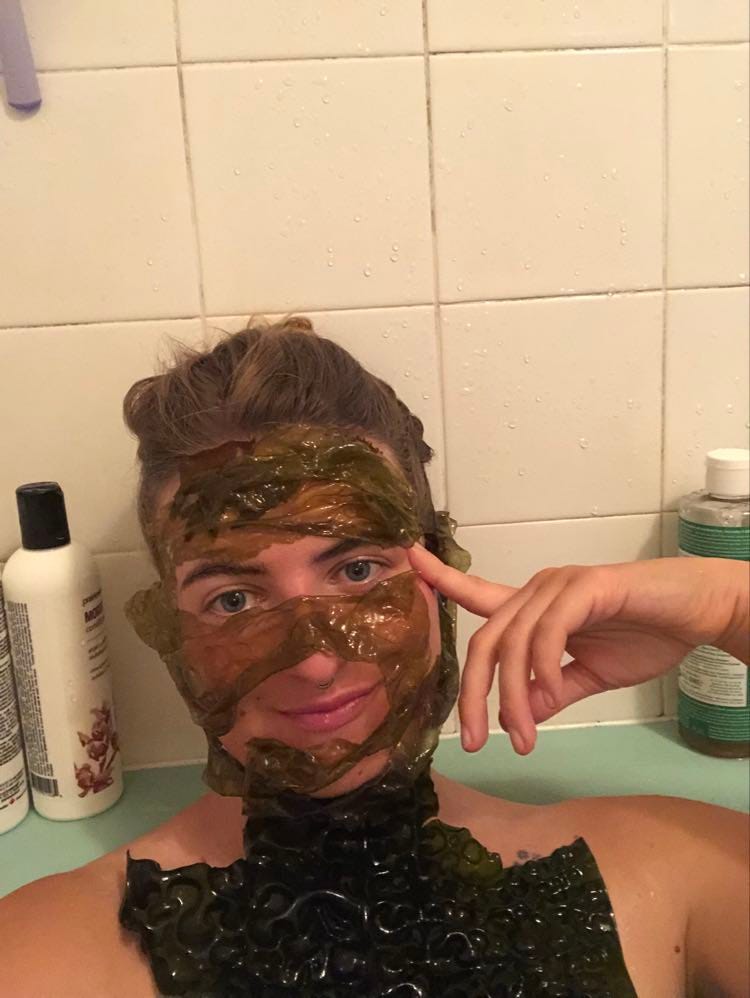
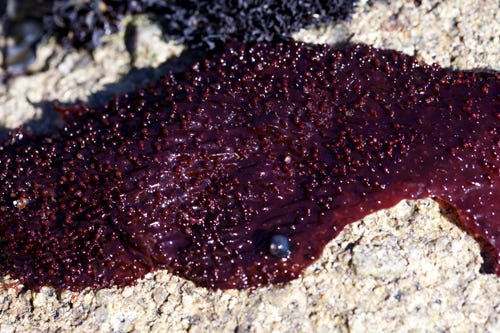
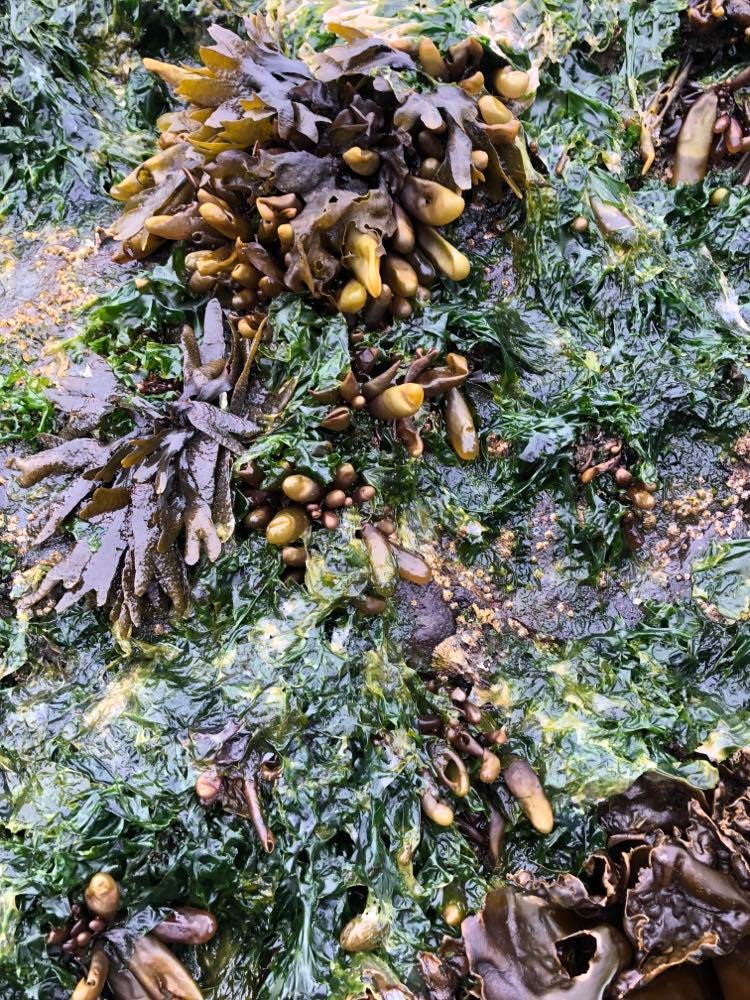
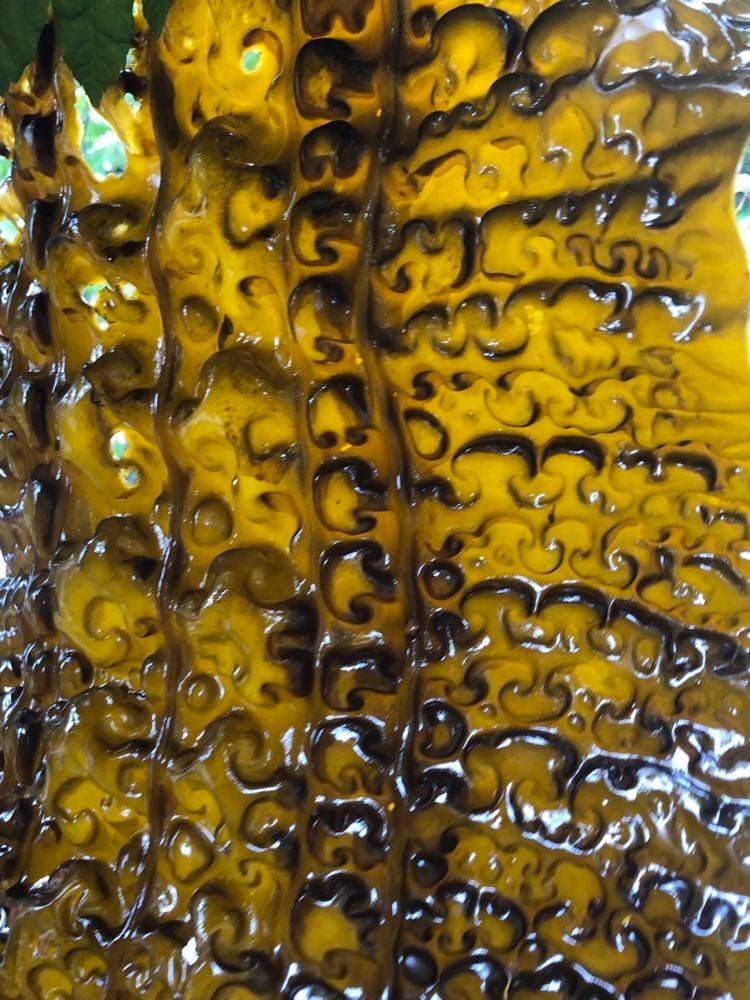

So cool! Loved reading this so much, thank you xx
Seaweed + epsom salt baths are my absolute favourite, I swear by them <3
I love seaweed! Eating it, playing with it on the beach, and I dream of seeing a kelp forest!!